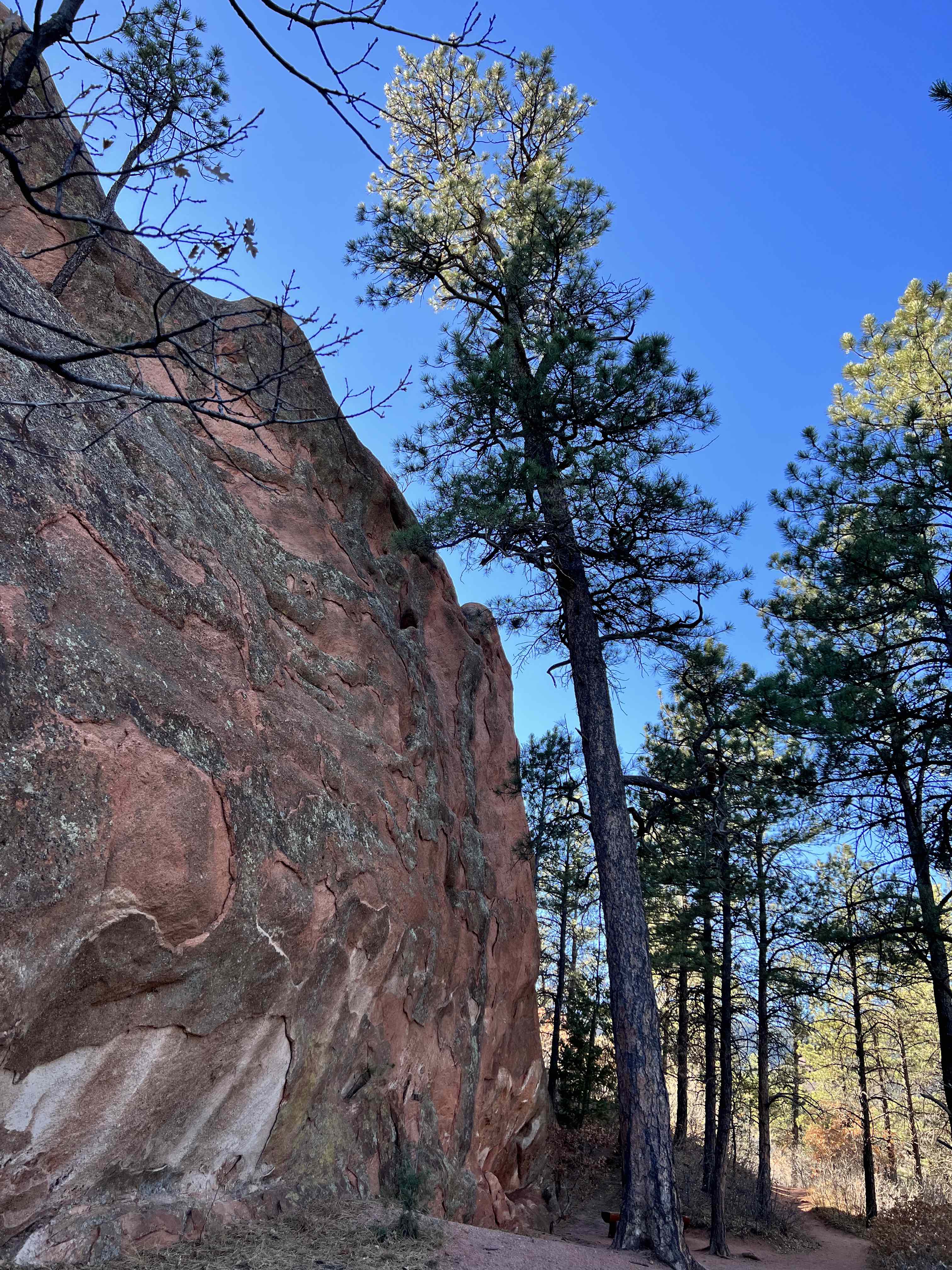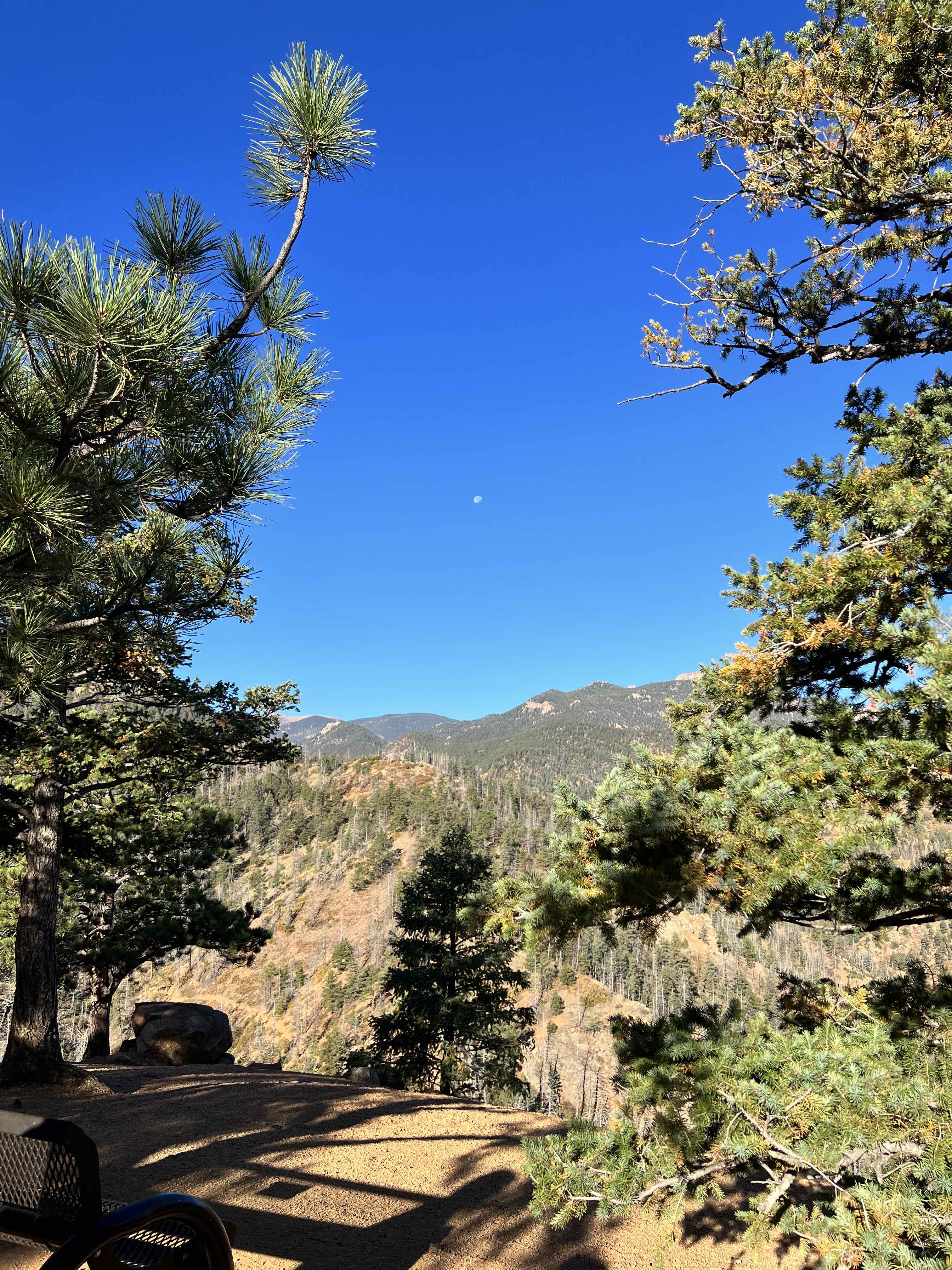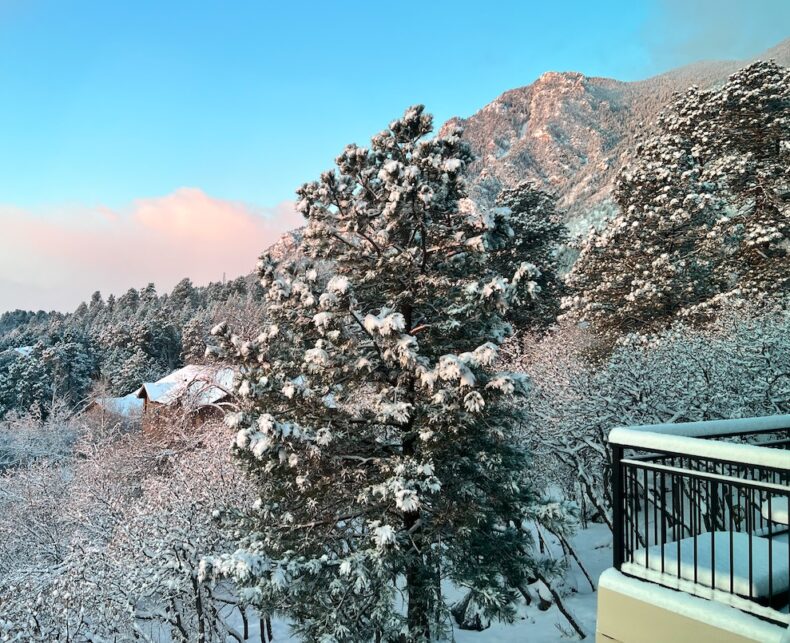
I used to think there was something wrong with ponderosa pines.
As a kid, their wild, asymmetrical growth bothered me. I wished they would just be conical, and be Christmas tree shaped, like the evergreen trees inside the stores. I wished they were more like the Colorado blue spruce, the state tree I learned about in school. I didn’t know the Christmas trees I liked were themselves spruce trees; this was something I learned when I was a little older. Maybe 10 or 11.
But these trees were the most common trees in the area where I grew up, so I decided I would try to like the scraggly ponderosas. The spruce trees were transplants, like I was when I was little, but ponderosas and cottonwoods grew wild and free, like they were right where they belonged.
Even as a kid, I was the kind of person that would grow to like something the more I learned about it. My parents took the family to the Shedd Aquarium in Chicago, where I first saw these words attributed to Jacques Cousteau, and I took them very seriously: “We only protect what we love, we only love what we understand, and we only understand what we are taught.”
So I learned more about ponderosa pines. I remember this vividly: I learned about their vanilla scent, which was especially sweet after a rain or after you scratched the bark and maybe lifted a bit of it. So I became the kid who sniffed trees. I read about the way bears scratch ponderosas to mark territory, and that these bear-scrapes create gashes that expose soft golden wood and fragrant sap. I think I learned, at some point, that the Lewis and Clark expedition used ponderosas for canoes. (Why does every kid learn about Lewis and Clark?) According to the Arbor Day Foundation, the Scottish botanist David Douglas named the tree for its heavy, “ponderous” wood. I don’t remember if this was something I knew as a kid, but it definitely sounds like the sort of Ponderosa Fact™ I would have been glad to toss out in mixed company, and now you know a bit about why I am the way I am.
I came to know a lot of these Ponderosa Facts™. But I could not get over their weird growth. They look like Seuss trees when they’re babies, all thin spindly trunk and ridiculously big puffball needle clusters going in every direction, jutting around in their groups of three. An adolescent ponderosa is also a mess, with branches all akimbo and an asymmetrical pyramidal shape to its crown. They’re not neat trees.
A mature ponderosa — which is a tree that is older than 350 years — is the kind that looks nice and stately, relatively speaking. These have a flatter crown and no lower branches, with dark brown or russet bark that is full of deep wrinkles and fissures that resemble parched soil. These were harder to find as a kid, but I knew the forests an hour away held these more mature, trim, and orderly trees. I live among them now.

But when I was young, I didn’t see ponderosas of any age as stately. I saw them as disorderly, and as dry, and as something not quite right, and as too wild. And then I left for the Midwest, where I learned what a truly stately tree looks like. The first house I called home in St. Louis was on a leafy street bordered by maples, elms, sycamores, black walnuts, and all kinds of midwestern native trees. They were a riot of color in the fall, and they burst forth on the first of March every year as spring’s heralds. I appreciated their shade, and I grew to love a certain few of these trees. But they were not the same as the good pines back home.
Remember Mitt Romney? He said a lot of dumb things on the campaign trail in 2012, but one thing he said has always stuck with me. Visiting Michigan, where he grew up, he said, “the trees are the right height.”
It was one awkwardly phrased comment among a whole season of malapropisms, but I knew what he meant. I understand it more deeply now, writing from my house in the middle of a ponderosa forest.
Romney’s just-right trees weren’t better than your trees or my trees, and he didn’t mean to imply that they were. They were his ur-trees. They were his coming-of-age trees. They were his childhood trees, the trees that felt like home when he became a man, or at least a younger version of the man he is now. They were his memory trees, the ones that now give him nostalgia and hiraeth: one of the greatest words in any language, which means something like “the longing to be where your spirit dwells.”
The ponderosas are my Romney trees. They are my ur-trees and the hiraeth trees of my heart’s home. They are wild and unassimilated and free, and they’re the trees that make me think of home, and where I was when I became me, and where I longed to be when I was stuck among the stately sycamores.
These are going to be the ur-trees of my children, too. This matters more to me than I ever imagined it would. It is one of the best things about my house and its view of ponderosa on ponderosa. You can keep the tall straight-trunked, smooth-barked deciduous trees. Eight-year-old me was not sure about the crazed vanilla-scented pine trees, but they imprinted on me all the same. The ponderosa is just right.

—
The “ur-trees” is after this wonderful Michael Cunningham short story in the New Yorker, which I read as a new mom, and which I never forgot.
Photos are all by the author, who apparently takes a lot of photos of trees.